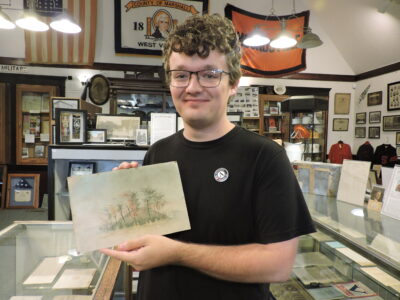Victorian Wall Pockets: A Charming Collectible
Victorians loved flowers and wanted them everywhere – in their homes, on their lapels, in their hair and even on their children, as they called their little girls names like Rose, Iris, Lily and Daisy.
Wall pockets became popular during Victorian times because of this love of fresh flowers in the home. For those who don’t know that such a thing exists, these decorative items are back in vogue and contemporary examples can be found if you look around at home decorating outlets and catalogs even today.
Made of porcelain, glass and pottery, wall pockets are flat-backed decorative objects that hang on a wall, providing a vase effect. Also called wall vases, wall pockets grew in popularity in the United States during the time between the two world wars.
These charming wall hangings were meant to hold cut flowers or to root ivy or other plants. Victorian examples in majolica are especially lovely. But wall pockets can be found in many desirable colors and types of glass, including flow blue, lustre ware, carnival glass, milk glass, hand painted and hand blown.
I like wall pockets because they are three-dimensional. Somehow, the surprise of a few fresh flowers on the wall instead of on the table is delightful. Even when empty, the three-dimensional decorative aspect of a wall pocket is a charming alternative to pictures and other flat wall decorations.
It’s interesting to note that because wall pockets were popular about the time of early automobiles, there are some bud vases that collectors may find that were actually meant to hang on a post between the front and back seats or just behind the back seat of these early cars.
The backs of these old vases are flat and have no hole for hanging, since they were originally supported by a metal rack.
I learned a lot about wall pockets from a Glass Collector’s Digest article written by Fredda Perkins. An avid collector, she put together a 159-page collector’s book that shows many examples of this fascinating collectible. Though her book was published in 1995, it is still available on Amazon. com.
Perkins notes that glass wall pockets were first made in the Pittsburgh area around 1876. It means that many local collectors might have one that they inherited or found along the way. Small wall pockets also have been used as match safes and hung by a fireplace.
The first patented glass wall pocket was made by a glass artisan named Washington Beck who worked with several Pittsburgh manufacturers. It showed an image of Columbia, a classical female figure often used to represent the United States in days gone by.
According to Perkins, Beck also patented a variation featuring a jester’s head with cap and bells. Both of these would be wonderful to find at a garage sale or antique shop.
A variety of pockets can be found, including some that are male heads with flowing beards, women’s heads, tree limbs, bird houses and many glass vase shapes. The wall pocket category of collectibles is more plentiful than you might imagine. Many styles were produced by most of the well-known glassmakers of the United States during the 20th century.
As always, though, it’s best to talk to reliable antiques experts first hand, since reproductions were made. Speaking of experts, our own glass pro, museum curator Holly McCluskey will be presenting a glass class series this February at the Oglebay Institute Glass Museum that offers a rare chance to study from Oglebay Institute’s extensive collection of Wheeling glass.
McCluskey’s series continues on Feb. 12, Feb. 19 and Feb. 26 from 6:30-8 p.m. Topics to be covered include Hobbs, Brockunier; Central Glass and Northwood. Call 304-242-7272 for details.
For comments or suggestions on local treasures to be featured in Antique of the Week, Maureen Zambito can be reached via email at: zambitomaureen@hotmail.com or by writing in care of this newspaper.






